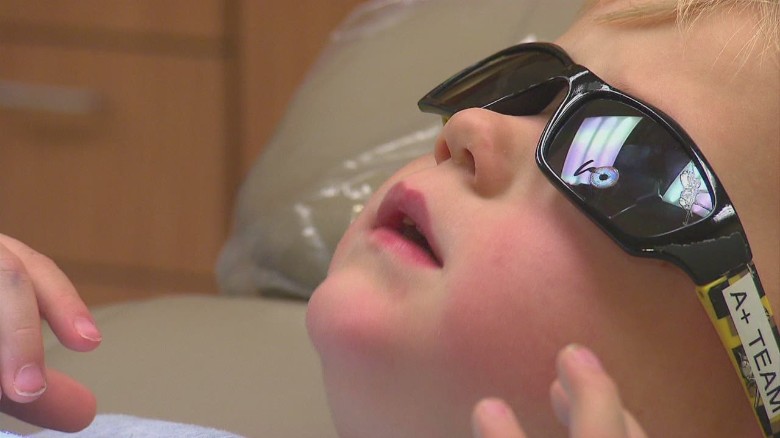
Anaheim, California (CNN)An outbreak that sent 30 children to Southern California hospitals and could have long-term effects on their health, is raising awareness about the risk of bacterial infection from water at the dentist's office.
All of the children had a pulpotomy, essentially a "child root canal" and were infected by water used during the procedure, said Dr. Matthew Zahn of the Orange County Health Care Agency.
The cases have been traced to the Children's Dental Group in Anaheim, with patients ages 3 to 9 years old all visiting the clinic between March and July.
"Several hundred people had these pulpotomies, so we are anticipating that for at least the next several weeks or months, we're going to see more cases," Zahn said. He added that the infection, called Mycobacterium abscessus, is slow-moving and can take weeks or months to show symptoms.
Swelling, redness and pain around the infected tooth can occur, with the bacteria often spreading to the gum and jawbone. In those cases, Zahn said, stopping the infection often means removing part of the jaw itself, making it "a long-term issue for these children."
Investigators believe the bacteria grow in low-level stagnant water that isn't flushed. In a dental setting, that water is used during treatment, and when a tooth is capped, it can trap the bacteria inside.
Calling it "a weak bug," Zahn said most people who encounter M. abscessus simply flush it away during their daily life. But patients who have had a pulpotomy aren't able to get to the infected area inside the tooth, allowing it to grow.
Cecilia Roman claims it happened to her child, who she said initially went in to have her teeth cleaned.
"At the end of the day, she had three teeth taken out. Her face was swollen," Roman told CNN affiliate KCBS/KCAL. "I feel like I let my daughter down."
The Dental Board of California is investigating whether proper procedures were followed at the Children's Dental Group office in Anaheim. The company operates other offices throughout California, but none of those has been linked to the outbreak.
The state of California mandates that water lines be "purged with air or flushed with water for at least two minutes" each day, according to documents provided by the Dental Board.
"We want to make sure they were doing what they were supposed to be doing," board spokeswoman Joyia Emard said.
She said the clinic, which is still open, is cooperating with a joint investigation between the state and county. The water lines at the clinic are not in use, pending the outcome of the investigation. The company tells CNN it will replace the lines and begin ongoing monitoring of its water purity.
Some parents think that the clinic could have acted sooner and that it placed profits over the safety of patients.
"I want their license revoked," Roman said. "I want that place to be shut down."
Zahn, who is heading the investigation for Orange County, said it's not clear how soon the clinic knew of the outbreak and began notifying at-risk patients. He said it probably took time before doctors even diagnosed the cases.
"Unless you know you're looking for it and culturing for it, it's not easy to identify, and they take a period of time to show up," Zahn said.
In a statement, Children's Dental Group CEO Sam Gruenbaum said he "regrets even one patient has developed this condition" and is working hard to "make sure every single person is seen for a precautionary examination." He said 842 children received the pulpotomies since March.
With dozens of children hospitalized -- and hundreds more at risk -- the impact of this outbreak has been wide-ranging. But it's still only the second such outbreak linked to a dental clinic, said spokesman Richard Quartarone of the Centers for Disease Control and Prevention.
The first was identified last year in Georgia when 20 children got sick after having pulpotomies. As in California, investigators linked the outbreak to contaminated water lines at a single clinic.
The CDC issued recommendations to properly disinfect water lines and avoid "dead ends in plumbing where stagnant water" can form. But now, with the California case bringing more attention to the issue, some wonder whether those warnings should be amplified.
"Do we modify any guidelines that make sure these specific events don't happen?" Zahn asked. "These are not common events, but they do have very significant consequences."
Click here to view original web page at www.cnn.com












